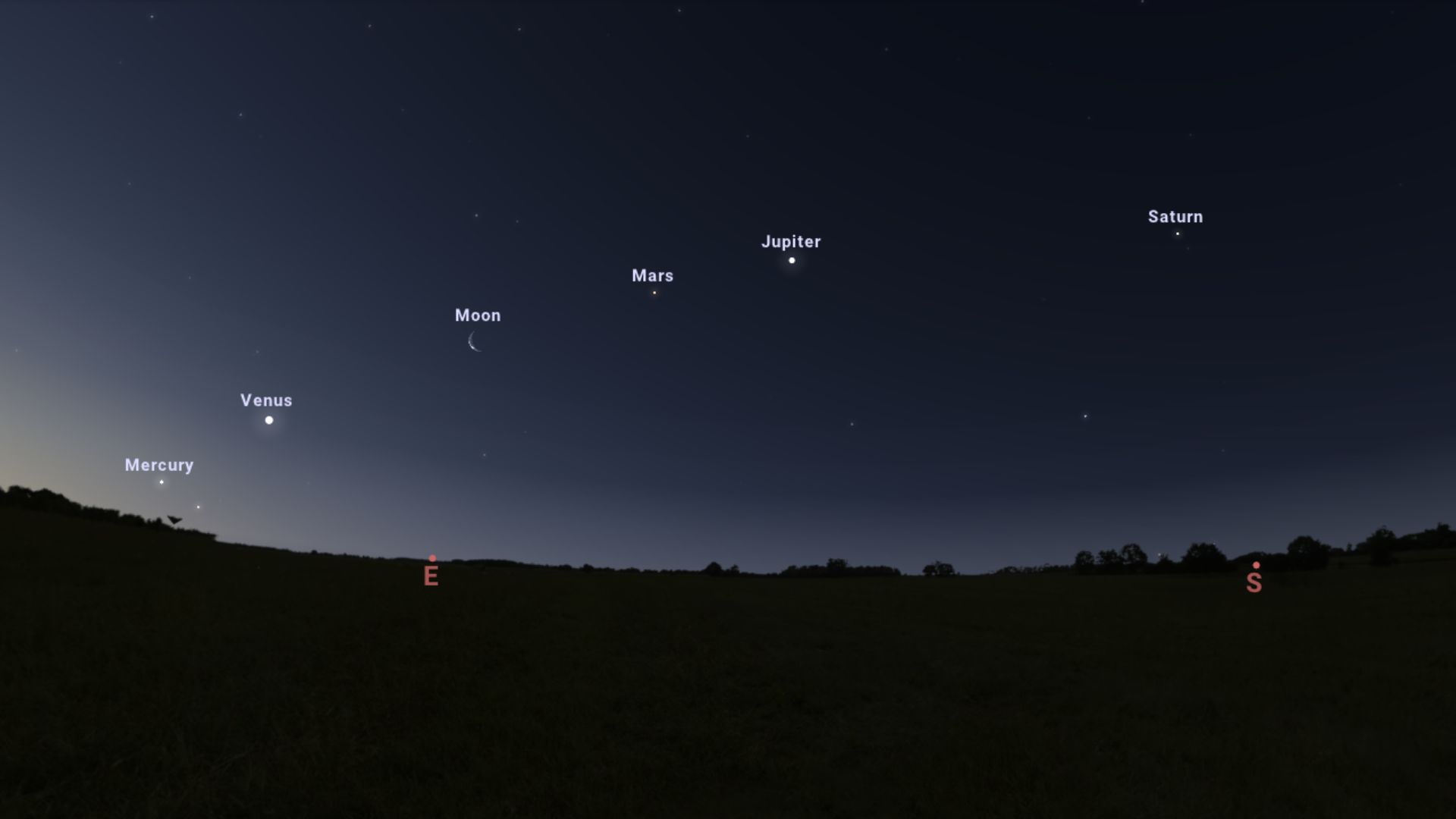Rare alignment of 5 planets peaks Friday as crescent moon joins the parade
A must-see! Such a planetary alignment will not happen again until 2040.

Friday morning could be the best time to view a rare planetary alignment that has greeted early risers this month and will not happen again until 2040.
Throughout June, Mercury, Venus, Mars, Jupiter and Saturn have lined up from left to right in the southeastern sky, in their orbital order from the sun.
On Friday (June 24) the "planet parade" will be joined by a special guest as the crescent moon slots in between Venus and Mars, acting as a "stand-in" for Earth in the planetary procession. According to a statement from Sky&Telescope, Mercury should rise about an hour before the sun on Friday, meaning there is ample time to snag a glimpse of the whole parade before the sun puts an end to the viewing party.
This event is not one to be missed as the last time these five planets aligned was back in 2004 and it won't happen again until 2040, according to BBC Science Focus.
Related: The brightest planets in June's night sky: How to see them (and when)

Looking for a telescope for the next stargazing event? We recommend the Celestron Astro Fi 102 as the top pick in our best beginner's telescope guide.
According to BBC Science Focus, the best time to see the 2022 alignment will be between 3:39 a.m. and sunrise at 4:43 a.m. on the morning of 24 June 2022. Saturn will lead out the parade, rising around 23:21 p.m. local time (June 23) for those based in New York, according to timeanddate, Jupiter will follow at 1:05 a.m., Mars at 1:44 a.m, Venus at 3:33 a.m. and finally Mercury at 4:11 a.m.
The exact time of the event varies depending on your specific location, so you'll want to check out a skywatching app like SkySafari or software like Starry Night to check for times. Our picks for the best stargazing apps may help you with your planning.
Get the Space.com Newsletter
Breaking space news, the latest updates on rocket launches, skywatching events and more!
If you take a photograph of the five-world fiesta, let us know! You can send images and comments in to spacephotos@space.com.
Throughout June, the moon has embarked on a planetary "meet and greet" in the predawn sky first passing Saturn on June 18, then Jupiter on June 21 and Mars on June 22. The moon will continue its tour in the coming days, passing Venus on June 26 and then ending its tour with Mercury on June 27.
If you're looking for a telescope or binoculars to see alignments like Friday's event, our guides for the best binoculars deals and the best telescope deals now can help. Our best cameras for astrophotography and best lenses for astrophotography to prepare to capture the next stargazing sight in a photo.
Follow us on Twitter @Spacedotcom and on Facebook.
Join our Space Forums to keep talking space on the latest missions, night sky and more! And if you have a news tip, correction or comment, let us know at: community@space.com.

Daisy Dobrijevic joined Space.com in February 2022 having previously worked for our sister publication All About Space magazine as a staff writer. Before joining us, Daisy completed an editorial internship with the BBC Sky at Night Magazine and worked at the National Space Centre in Leicester, U.K., where she enjoyed communicating space science to the public. In 2021, Daisy completed a PhD in plant physiology and also holds a Master's in Environmental Science, she is currently based in Nottingham, U.K. Daisy is passionate about all things space, with a penchant for solar activity and space weather. She has a strong interest in astrotourism and loves nothing more than a good northern lights chase!
